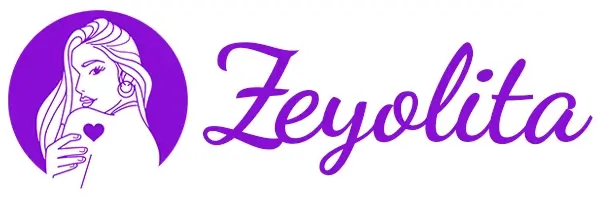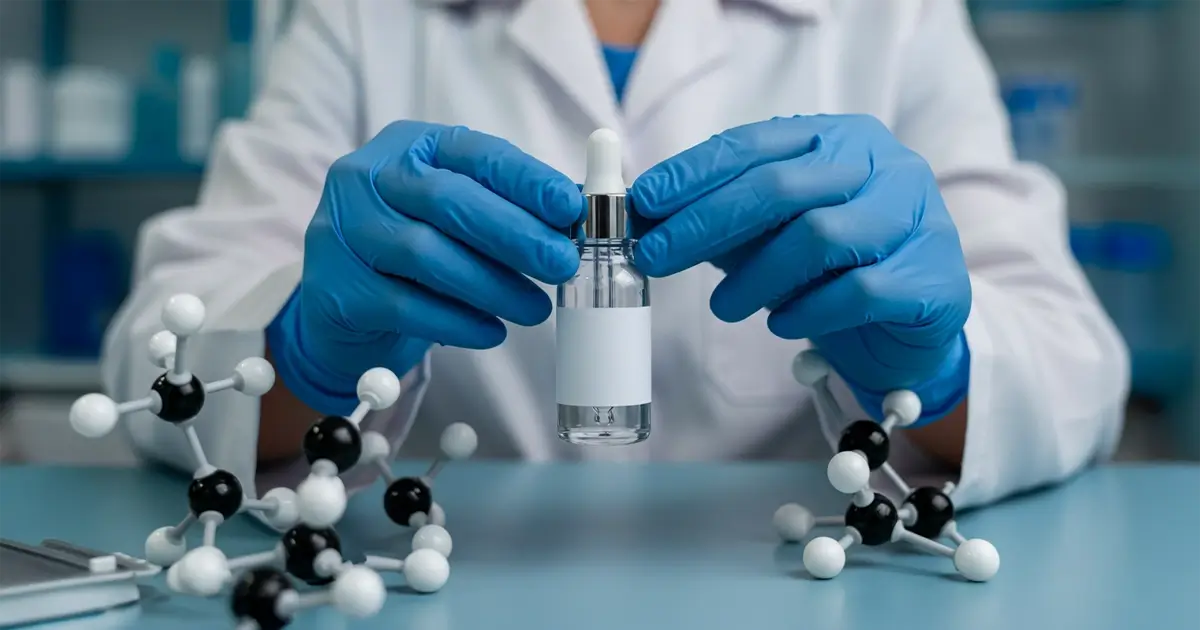Ever pick up a serum that promised moon-level glow, only to find it full of vague fairy dust? Today I'll teach you to decode ingredient lists, spot scientific gold and skip the filler - expect a 12-minute read.
Why Ingredient Lists Trump Catchy Taglines
Front labels shout in capital letters, yet regulations require that every cosmetic sold in the EU and United States display its full International Nomenclature of Cosmetic Ingredients (INCI) list. That quietly typed column tells the truth.
Unlike unregulated marketing claims, INCI names must follow strict rules set by the Personal Care Products Council and mirrored by bodies such as the European Commission. Whether you shop in Paris or Ankara, water is always Aqua and vitamin C is Ascorbic Acid.
A 2023 analysis published in the Journal of Cosmetic Dermatology found that consumers who understood INCI names made safer choices and reported fewer skin reactions. Knowledge beats hype every time.
Remember that "dermatologist tested" has no legal definition. It could mean one doctor glanced at the formula once. Rely on the ingredient list, not vague badges.
I like to treat the back label as a mini curriculum vitae. If I see credible experience - ceramides, proven antioxidants, gentle preservatives - the product gets an interview on my bathroom shelf.
One moisturiser I tested screamed "aloe infusion" on the jar yet listed Aloe Barbadensis Leaf Juice after phenoxyethanol, meaning less than 1 %. Marketing loves tall tales.
Decoding INCI Names: Tiny Words, Big Clues
INCI looks intimidating: Caprylic/Capric Triglyceride, Butyrospermum Parkii, Ethylhexylglycerin. Once you learn the pattern, it reads like a map: prefixes hint at molecular size, botanical Latin signals plant oils, and suffixes such as "-ate" reveal ester links.
Group ingredients mentally into families. Fatty alcohols such as Cetearyl Alcohol soften skin, whereas short-chain drying alcohols such as Alcohol Denat can be irritating in high doses.
If an unfamiliar name makes you blink, pop it into INCIdecoder, a free database built by chemists. I treat it like a pocket translator on shopping trips.
Latin plant names follow binomial nomenclature. The first word denotes genus, the second species. For example, Camellia Sinensis covers green, black and white tea extract variations.
Chemical composites often list every backbone. Coco-Caprylate/Caprate tells us coconut-derived fatty chains are esterified with caprylic and capric acids, yielding a light emollient that feels like silicone but is biodegradable.
INCI names sometimes lag behind innovation. New biotech peptides ship under trade names until the council assigns an official tag, so early adopters must decode both systems.
Active Stars vs Supporting Cast
Actives drive results. Think Niacinamide, Retinol, Azelaic Acid. They usually sit higher in the list unless the formula is potent at low concentration, like a 0.1 % retinaldehyde cream.
Support players - emulsifiers, stabilisers, humectants - keep the texture stable and the pH friendly. Do not fear long names such as Polyglyceryl-6 Distearate: they often make a lotion elegant.
Watch out for marketing fluff. "Diamond powder" sounds fancy but typically sits after fragrance, meaning trace amounts that sparkle more in the press release than on your skin.
Preservatives: The Unsung Heroes
Parabens get a bad rap online, yet the Mayo Clinic wound study 2021 concluded that methylparaben is still one of the least sensitising options at 0.4 %.
If a water-based lotion has zero recognised preservative, run. Without them, microbes treat your moisturizer like an all-inclusive resort.
Order Matters: The First Five Rule and the 1 % Line
Regulations require ingredients above roughly 1 % to appear in descending order. In most moisturisers, the first five make up about 80 % of the formula.
Pay special attention to positions one through five. If Glycerin, Squalane and Panthenol show up early, rejoice. If denatured alcohol and synthetic fragrance dominate, your skin may stage a protest.
Below 1 %, anything goes order-wise. Potent actives like 0.3 % retinol often appear here. That is why it is smarter to look for proven percentages on the box or brand website rather than trust order alone.
Some brands disclose active percentages in parentheses. "Niacinamide (5 %)" is music to my pores. Lack of percentages is not a crime, but transparency earns trust.
The 1 % rule also explains why botanical extracts often cluster at the bottom. They colour marketing slides yet rarely reach clinically meaningful doses.
When in doubt, contact customer service and ask for a percentage chart. Good brands respond with pride; shady ones ghost you faster than a spam caller.
Red Flags and Green Lights
Red Flags
- High-placement Alcohol Denat or SD Alcohol 40-B: can strip barrier.
- Unnamed "Parfum": masks many potential allergenic compounds.
- Essential oils such as Citrus Aurantium Bergamia near the top: photosensitivity risk.
- Unspecified mineral oil in leave-on balms if you are acne-prone.
- Recycled buzzwords like "clean" without ingredient transparency.
Green Lights
- Ceramide NP, Ceramide AP: reinforce lipid barrier.
- Niacinamide within first half: brightens and strengthens.
- Centella Asiatica Extract mid-list: soothing antioxidant.
Context matters. Alcohol Denat low on a quick-drying SPF spray can be acceptable, but high in a leave-on night cream may spell dehydration.
Beyond the List: Symbols, Claims and Context
Look for the "open jar" symbol with a number like 12M. That tells you the period after opening. No fortune-telling required.
A cruelty-free bunny icon means nothing without third-party certification. Cross-check with PETA's searchable database.
Broad-spectrum sunscreens in Europe carry a UVA circle logo next to SPF. If it is missing, your sunscreen may shield UVB while letting UVA party on your collagen.
Eco-certification logos such as COSMOS Organic indicate broader audits covering sourcing and waste management. If sustainability is your jam, those badges are worth decoding.
Do not confuse PAO with shelf life. An unopened sunscreen may last three years, but once the cap pops, the clock starts ticking according to the PAO symbol.
Opaque vs Transparent Bottles
Light can degrade actives like vitamin C, retinol and certain botanical polyphenols. If a brand sells a crystal-clear bottle full of L-ascorbic acid, the romance may fade faster than a summer fling.
Look for amber glass, airless pumps, or aluminium tubes. These design choices are not mere aesthetics, they act as bodyguards for fragile molecules.
Matching Claims with Evidence
Brands may promise "clinically proven hydration". Flip to the ingredients, spot 3 % hyaluronic acid, then verify whether that level shows benefit. A 2024 double-blind study from Seoul National University reported significant hydration at 2.5 % sodium hyaluronate, supporting the claim.
When you see peptides, search the exact sequence name online plus "study". Some, like Palmitoyl Tripeptide-1, have peer-reviewed backing, others ride on wishful thinking.
I often link out to supporting research in my articles, for instance my deep dive on hydration science here. Use those as starting points, then explore PubMed. Curiosity beats ads.
Peer-reviewed evidence evolves. Keep an eye on recent meta-analyses, not decade-old single studies. Science updates formulas faster than gossip updates group chats.
Finally, cross-reference claims with texture. A supposedly "non-comedogenic" balm packed with heavy butters might clog oily skin despite the label.
Ingredient Interactions: When Chemistry Becomes Drama
Think of your face as a small theatre. Ingredients need to get along backstage or the show flops. Acids and peptides can clash because low pH breaks peptide bonds.
If you build a routine with strong actives, read labels for buffers such as Sodium Hydroxide that balance pH. A slightly alkaline peptide serum followed by an acidic vitamin C can still work if you wait 20 minutes.
Mixing benzoyl peroxide and retinol is like inviting two energetic toddlers to share crayons, chaos ensues. Many modern brands micro-encapsulate retinol so it survives, but always check usage directions.
Remember to layer thin to thick textures. Watery essences sink first, oil-rich creams seal last. The order on your shelf should mirror viscosity, not hype.
Formulation Synergy Examples
Niacinamide plus N-acetyl glucosamine boosts brightening. If you spot this duo near the top, labs likely aimed for measurable glow.
Green tea polyphenols paired with sunscreen filters reduce oxidative stress, a combo supported by a 2022 University of Tokyo in-vivo study.
On the flip side, pure essential oils can deactivate certain preservatives. If you love fragrant naturals, ensure phenoxyethanol or similar sticks around.
Spotting Hidden Allergens and Irritants
Fragrance allergens hide behind scientific nicknames such as Hydroxycitronellal or Alpha-Isomethyl Ionone. The EU mandates separate listing when they exceed 0.001 % in leave-ons, so learn the common offenders.
If your skin tingles after niacinamide serums, scan for menthol derivatives or pepper extracts like Piper Nigrum Seed Oil. These sneaky "sensations" sell excitement but can inflame rosacea.
High-tech allergens exist too. Methacrylate cross-polymers thicken gels beautifully, yet some people develop contact dermatitis. Patch testing new formulas on your inner arm is the cheapest insurance.
Reading Between the Parentheses
Sometimes allergens appear in parentheses after the word "Parfum": Linalool, Geraniol, Citronellol. Treat those as red flags if your skin peaks at the sight of scented candles.
US labels may not break them out, so consider the EU list a study cheat sheet. Even across the Atlantic, molecular irritation stays the same.
FAQ
How can I tell if a product is fragrance-free?
Scan the list for "Parfum", "Fragrance", essential oil Latin names or aroma compounds like Limonene. Absence means fragrance-free.
Is a long ingredient list always bad?
Not necessarily. Complex emulsions need many helpers. Focus on what the first half contains and whether potential irritants sit high.
Do natural ingredients guarantee safety?
Poison ivy is natural. Safety depends on concentration, processing and your personal tolerance, not on the noun "natural".
Why is water always first?
Most creams are oil-in-water emulsions. Water carries humectants and helps the formula spread. High water is normal unless you pay luxury prices for mostly H₂O.
Can I determine pH from the label?
Not directly. Labels rarely list pH. Look for acids like Lactic Acid or strong bases like Triethanolamine to guess but a simple pH strip is more reliable.
What does "hypoallergenic" actually mean?
Nothing official. Brands may use the term, but there is no global standard. Always patch test.
Should I avoid parabens completely?
Current evidence finds parabens safe at regulated levels. If you prefer paraben-free, ensure alternative preservatives are present.
Why do some products list colorants at the very end?
Colorants are potent dyes used in tiny amounts, so they fall below 1 % and appear last.
Is higher percentage always better for actives?
Not necessarily. Skin tolerates 2 % salicylic acid well, but 10 % can peel your face.
What is the "1,2-hexanediol" in my serum?
It is a synthetic diol that works both as a humectant and co-preservative. Safe in low percentages.
Does "dermatologist tested" guarantee safety?
No. The label does not tell how many testers or what protocol. Use it as a conversation starter, not a guarantee.
Conclusion
Reading labels takes practice, yet the payoff is skin that matches your effort and budget.
Start with the first five ingredients, spot actives and red flags, then let science guide your cart. See you in the next post - until then, take good care of your skin!
Leave me a comment with the trickiest INCI name you have met, I love decoding linguistic puzzles over coffee.
Quick joke: if ingredient lists were movie credits, water would win Best Actor, while mystical botanicals pop in for a one-second cameo yet hog the poster.


Comments (0)
No comments yet - be the first to share your thoughts!
Leave a Reply
Your email address will not be published. Required fields are marked *